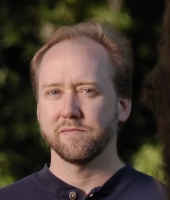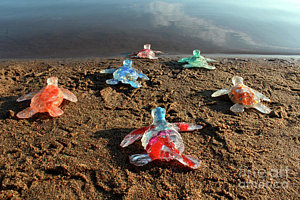CONGRATULATIONS IACA CYCLE #2
MINI-GRANT RECIPIENT, ADAM LONG!
Click here to learn about our other Cycle #2 mini-grant winner, Kittie Mae Morris.
Website: www.adamlongsculpture.com
You may be the next grant winner! Click here to apply.
There is no specific type of artist that we focus on or primarily support. Creative expression comes in a wide variety of artistic disciplines and genres. We are looking for passion and excellence in your craft. Tell us why your work is important to you and how you hope it will impact others.
Congratulations to Adam Long on his successful proposal. He requested funding for supplies needed to create sea turtle sculptures. These sculptures will be used to raise money to donate to organizations that clean up plastic from the oceans and care for wildlife injured by human activity. Adam has been pursuing a career as a professional artist for about 15 years after 10 years as a public school art teacher.
The following are excerpts from Adam's proposal:
Humankind tends to view itself as separated from and above its environment. My work is ultimately about humanity and explores our connection to nature, our place in it and how we seek to explore and understand our environment. The sculptures examine what it means to be human and bring nature back to us by using natural and man-made found objects. We are not apart from nature, but a part of it. We are called to be good stewards of the Earth and all that is in it.
I create sculptures from natural objects that I collect from the environment and assemble them into dynamic, figurative sculptures... In each one I challenge myself to use the objects just as God created them without changing their inherent form.
The project I am seeking funding for comes from the same mindset, but uses different, contemporary materials and methods. Cast resin and found plastic. I have taught myself how to use these materials, but they can get expensive.
When I walk through my [neighborhood] less than a mile from the Missouri River I see plastic litter along the streets and sidewalks. During rain storms this plastic floats into storm drains, creeks, into the river and eventually makes its way to the ocean harming wildlife all along the way. You may have heard of the "plastic islands" that have started collecting in the ocean gyres (quiet areas outside of the main ocean currents) and along beaches around the world. Animals mistake the colorful objects as food. Albatross parents literally feed plastic to their young till they die. Sea turtles mistake plastic bags floating in the water for one of their main food sources, jellyfish, and die gagging on a plastic bag. The plastic gets churned in ocean waves breaking down into smaller and smaller bits to the point small sea life can ingest it. These animals then get eaten and on up the food chain the plastic goes. The chemicals in the plastic leach out and contaminate the water poisoning micro-organisms as well.
One report I read estimated that about 10% of the plastic in the oceans came from the land (meaning 90% comes from ocean going vessels such as plastic fishing nets from fishing boats and waste from other boats). I want to do what I can to lower that 10% as much as possible. So every walk I take I bring a bag and fill it with the trash I find. I recycle most of it, but I have saved and washed much of the plastic to create these sculptures.
Integrity: Arts & Culture Association is excited to be a part of such a worthwhile project and we wish Adam the best in all of his future endeavors!
Where Eagles Soar (Isaiah 40:31)

